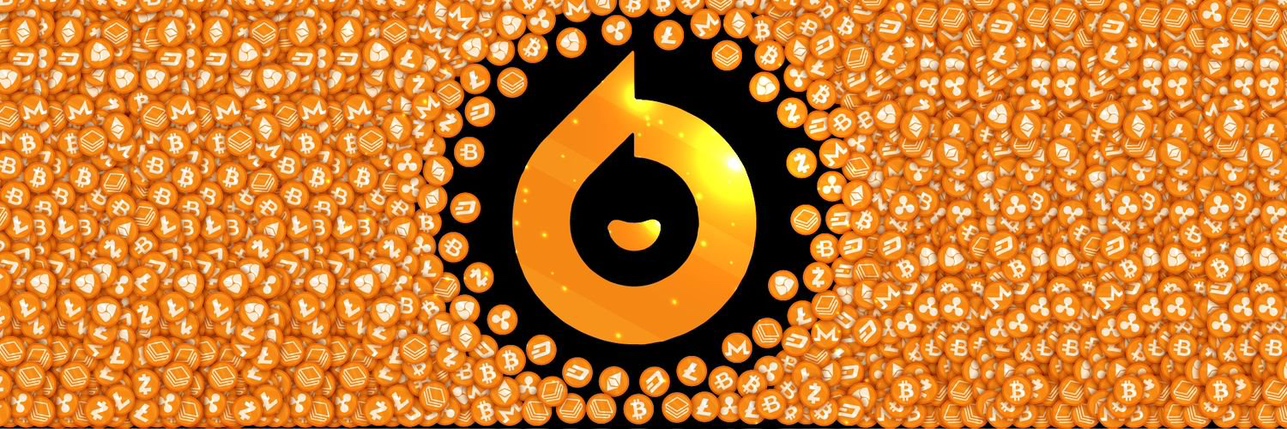
Loom Network priceLOOM
LOOM/USD price calculator
Loom Network market Info
Live Loom Network price today in USD
The cryptocurrency market is experiencing a period of robust activity and significant advancements as of October 18, 2025, marking a dynamic phase characterized by substantial market cap growth, pivotal technological upgrades, and maturing regulatory frameworks. The third quarter of 2025 alone saw the total crypto market capitalization surge by 16.4%, adding over $563 billion to reach an impressive $4 trillion. This resurgence is widely attributed to a 'second leg' of recovery, fueled by both increasing prices and a growing number of participants across the digital asset ecosystem.
Bitcoin’s Enduring Strength Post-Halving Dominates Discussions
The impact of the 2024 Bitcoin halving continues to be a central theme in market analyses. Following the event in April 2024, which reduced miner rewards, Bitcoin has solidified its position amidst growing institutional recognition and a more clearly defined scarcity narrative. While the immediate aftermath of the halving included some price volatility, the overall trend has remained positive, with prices showing resilience. Bitcoin was observed trading around $111,053 at the close of yesterday, October 17, 2025, navigating a market that recently experienced a significant liquidation event earlier in the month, where BTC briefly dipped from above $126,000. Despite such market movements, Bitcoin has maintained a trading channel above $108,000 since mid-July, underscoring its underlying strength and demand.
Ethereum’s Ascendance Fueled by Dencun and ETF Inflows
Ethereum has also been a focal point of market enthusiasm, largely driven by the successful implementation of the Dencun upgrade and the significant influx of institutional capital via spot Ethereum Exchange-Traded Funds (ETFs). The Dencun upgrade, particularly its EIP-4844 feature (proto-danksharding), has dramatically reduced transaction fees on Layer-2 scaling solutions, making the Ethereum network more accessible and efficient for users and developers. This technological advancement, coupled with the launch of spot Ethereum ETFs in 2025, has attracted billions in institutional investment, validating Ethereum’s status as a legitimate and appealing investment vehicle. This confluence of factors led to Ethereum reaching a new all-time high of $4,946 in August 2025. Market analysts are projecting further bullish momentum, with some anticipating ETH to reach $7,500 by the end of 2025, and even more ambitious targets for subsequent years.
Real-World Asset (RWA) Tokenization Takes Center Stage
The tokenization of real-world assets (RWAs) has transitioned from a theoretical concept to a practical and rapidly expanding sector in 2025. This innovation involves representing tangible assets like bonds, real estate, and commodities as digital tokens on blockchain networks, enhancing liquidity, transparency, and accessibility for investors. Institutional adoption in this space has accelerated dramatically, with major financial institutions moving beyond pilot programs to launch scaled tokenized funds and platforms. While stablecoins continue to dominate the existing tokenized asset market, the focus is increasingly shifting towards the explosive growth potential of other RWA categories. Projections indicate that the non-stablecoin RWA market could grow from its current niche to trillions by 2030, driven by clearer regulatory frameworks, heightened institutional demand, and continuous technological innovation. Stellar (XLM), for instance, is actively expanding its ecosystem to facilitate RWA tokenization, aiming to bring billions in tokenized asset value on-chain by the year's end through strategic partnerships and protocol upgrades.
Navigating the Evolving Global Regulatory Maze
Regulatory developments have been a defining characteristic of the crypto market in 2025, with significant progress towards clearer frameworks globally. In the United States, a notable shift towards a more crypto-friendly stance has emerged. The Guiding and Establishing National Innovation for U.S. Stablecoins Act (GENIUS Act) was signed into law, providing a foundational regulatory framework for payment stablecoins. Furthermore, the Securities and Exchange Commission (SEC) has established a Crypto Task Force and is exploring exemptions for tokenization and distributed ledger technology (DLT) securities. Across the Atlantic, the European Union's Markets in Crypto-Assets (MiCA) regulation is in various stages of implementation, while jurisdictions like the United Kingdom, Singapore, and Hong Kong are also advancing their respective digital asset frameworks. These collective efforts signal a global trend towards establishing comprehensive and balanced regulatory environments that aim to foster innovation while ensuring investor protection and market integrity.
The AI-Blockchain Synergy Revolutionizes Operations
A burgeoning and increasingly impactful trend is the convergence of Artificial Intelligence (AI) and blockchain technology. This synergy is creating new opportunities for enhanced data privacy, security, and decentralized intelligence. By integrating AI with blockchain, the market is witnessing the emergence of intelligent automation within decentralized networks, significantly improving data integrity, enabling more autonomous and secure financial systems, and fostering greater accountability and transparency in AI models. This powerful combination is poised to reshape industries by blending AI's analytical and decision-making capabilities with blockchain's immutable and transparent record-keeping, leading to innovations across various sectors.
Stablecoins Continue Record-Breaking Trajectory
Stablecoins have also demonstrated remarkable growth, reaching new all-time highs in market capitalization. In the third quarter of 2025, the total market cap for stablecoins soared to $287.6 billion, primarily propelled by the expansion of USDe and the continued dominance of Tether (USDT). This sustained growth underscores the increasing utility of stablecoins for various functions within the crypto ecosystem, including trading, payments, and as a store of value.
Do you think the price of Loom Network will rise or fall today?
Now that you know the price of Loom Network today, here's what else you can explore:
How to buy Loom Network (LOOM)?How to sell Loom Network (LOOM)?What is Loom Network (LOOM)What would have happened if you had bought Loom Network (LOOM)?What is the Loom Network (LOOM) price prediction for this year, 2030, and 2050?Where can I download Loom Network (LOOM) historical price data?What are the prices of similar cryptocurrencies today?Want to get cryptocurrencies instantly?
Buy cryptocurrencies directly with a credit card.Trade various cryptocurrencies on the spot platform for arbitrage.Loom Network price prediction
When is a good time to buy LOOM? Should I buy or sell LOOM now?
What will the price of LOOM be in 2026?
In 2026, based on a +5% annual growth rate forecast, the price of Loom Network(LOOM) is expected to reach $0.001077; based on the predicted price for this year, the cumulative return on investment of investing and holding Loom Network until the end of 2026 will reach +5%. For more details, check out the Loom Network price predictions for 2025, 2026, 2030-2050.What will the price of LOOM be in 2030?
About Loom Network (LOOM)
What Is Loom Network?
Loom Network is a Platform-as-a-Service (PaaS) blockchain solution, designed as a Layer-2 scaling solution for Ethereum-based applications. It utilizes sidechain development to facilitate the creation of decentralized applications (dApps) that can operate with their own rules, consensus methods, and security measures, enabling faster and more efficient scaling. Initially, Loom Network concentrated on blockchain-based social media and gaming dApps but has since pivoted to focus on enterprise blockchain applications, specifically for government agencies and healthcare providers.
Loom Network, founded in 2017, is headquartered in Bangkok, Thailand. It aims to resolve the scalability trilemma in blockchain design, which posits that a blockchain network can only maximize two out of three options: scalability, decentralization, or security. By offering developers the ability to create customized sidechains, Loom Network provides a solution for building scalable and fast applications without compromising the security and decentralization inherent to the Ethereum protocol.
Resources
Official Documents: https://loomx.io/developers/en/intro-to-loom.html
Official Website: https://loomx.io/
How Does Loom Network Work?
Loom Network employs a sidechain architecture to alleviate traffic from the Ethereum mainnet, allowing the execution of high-performance dApps without sacrificing the security or decentralization of Ethereum. These sidechains are interoperable with the Ethereum mainnet, facilitating easy porting of dApps between the two networks. Loom Network’s sidechains are secured by a Delegated Proof-of-Stake (DPoS) consensus mechanism, which is more energy-efficient and scalable compared to Proof-of-Work, used by networks like Bitcoin.
The Loom Network provides an SDK for developers, simplifying the development of dApps without requiring advanced knowledge of Ethereum’s native Solidity programming language. Applications developed using the Loom SDK can be integrated into the Loom Network platform through their unique Ethereum sidechain, called the dAppChain. This allows developers to implement distinct rules, consensus methods, and data protocols for their applications.
What Is LOOM Token?
LOOM is the native utility token of the Loom Network with a fixed total supply of one billion. It powers the Loom Network and is used for staking on the PlasmaChain, a blockchain connected to Ethereum that uses a Proof-of-Stake mechanism. LOOM tokens are essential for clients and partners to access the Loom Network, and businesses pay subscription fees and transfer fees in LOOM for utilizing the Loom Network PaaS model and for moving assets between Loom Network sidechains and the main Ethereum blockchain.
Loom Network's Impact on Finance
Loom Network’s innovative approach to solving Ethereum’s scalability issues has the potential to revolutionize financial applications built on blockchain technology. By enabling the development of high-performance dApps, Loom Network can facilitate faster and more efficient financial transactions, reducing latency and improving user experience in decentralized finance (DeFi) applications. The integration of Layer-2 solutions like Loom Network can drive the adoption of blockchain technology in the financial sector, offering scalable and secure alternatives to traditional financial systems.
What Determines Loom Network's Price?
The price of Loom Network's token, like other cryptocurrencies, is influenced by a myriad of factors, reflecting the dynamics of the cryptocurrency market. One primary determinant is market supply and demand, driven by cryptocurrency enthusiasts and the crypto community's perception of Loom Network's value, especially in its ability to solve Ethereum’s scalability issues. The LOOM token's utility within the network, required for accessing the platform and paying fees, also plays a crucial role in its valuation. Market sentiment, often swayed by cryptocurrency news, trends, and analysis from cryptocurrency experts and influencers, can significantly impact the cryptocurrency price, leading to fluctuations and volatility.
Cryptocurrency regulation is another pivotal factor, with changes in legal frameworks potentially affecting the token's availability and, subsequently, its price. For those wondering where to buy cryptocurrency like LOOM, it can be acquired on leading exchanges such as Bitget, and the ease of acquisition can also influence its price. Cryptocurrency charts and crypto market analysis are essential tools for those looking to understand price trends and make price predictions for 2023 and beyond, aiding in crypto portfolio management and trading strategies. The overall adoption and development trajectory of Loom Network, coupled with its security and the perceived risks and rewards of investment, will continue to shape its price in the cryptocurrency market.
In conclusion, determining the price of LOOM involves considering various factors, including market supply and demand, utility, market sentiment, regulation, and broader trends in the cryptocurrency market. Potential investors, especially cryptocurrency beginners, should stay informed about cryptocurrency events, conduct thorough research, and consider the opinions of cryptocurrency experts before deciding if LOOM is the best crypto investment for 2023.
Bitget Insights




LOOM/USD price calculator
LOOM resources
Tags:
What can you do with cryptos like Loom Network (LOOM)?
Deposit easily and withdraw quicklyBuy to grow, sell to profitTrade spot for arbitrageTrade futures for high risk and high returnEarn passive income with stable interest ratesTransfer assets with your Web3 walletWhat is Loom Network and how does Loom Network work?
Global Loom Network prices
Buy more
FAQ
What is the current price of Loom Network?
What is the 24 hour trading volume of Loom Network?
What is the all-time high of Loom Network?
Can I buy Loom Network on Bitget?
Can I get a steady income from investing in Loom Network?
Where can I buy Loom Network with the lowest fee?
Related cryptocurrency prices
Prices of newly listed coins on Bitget
Hot promotions
Where can I buy Loom Network (LOOM)?
Video section — quick verification, quick trading









